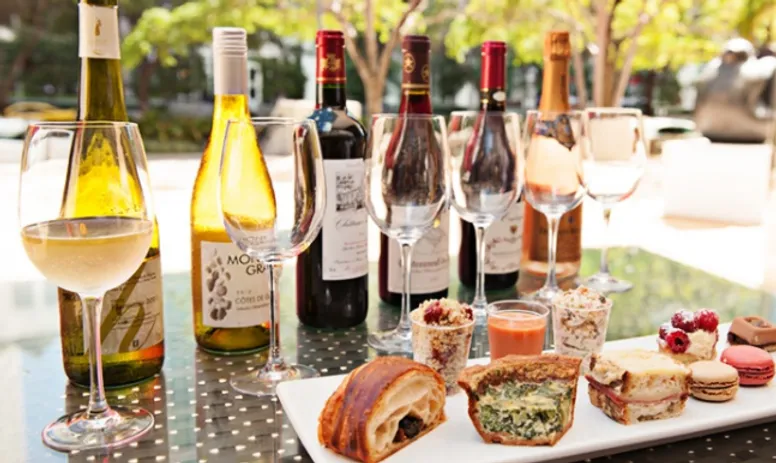An intro to some Food and Wine (Beer) Pairing tips.
Matching your food offer with your drink is the perfect opportunity to create a more enjoyable experience for you and your friends.

Matching your food offer with your drink is the perfect opportunity to create a more enjoyable experience for you and your friends.
However, the whole subject of wine, beer and food pairing can be tricky to navigate. The most important thing to remember is there are no set rules – and if it works for you then it's a good match.
Even if you like drinking a Cabernet Sauvignon with a Salad although not everyone will appreciate this match I'm afraid.
That said, here are a few guidelines that will help you create your own perfect matches:
Match the weight of the wine with the weight of the food.
Heavy dishes like beef casserole will need a full-bodied wine or a rich malt-driven beer. Light dishes like a salad need a more delicate light-bodied wine or a delicate Saison.
You can even try using the characteristics of the wine to replace the acidic elements in your vinaigrette.
Choose wines that have similar levels of intensity.
Foods that are intensely flavoured can overpower the flavour of wines, and intensely flavoured wines can overpower lightly flavoured foods.
Matching a full-bodied Syrah with a delicate fish dish will result in the wine tasting more tannic than usual and the flavours of the fish will disappear. Instead, stick some ribs on the BBQ and create a match that enhances your evening.

Match acids with acids
If you have a dish with strong acidic content such as pasta with tomato sauce or a salad with vinaigrette, match the food with a wine that has high acidity too. The acid in the food will balance the wine, making the wine taste fruitier and less acidic.
This same advice can be used with a sour beer as well - something like a Berliner Weisse is perfect.

Oiliness
In the same way that lemon cuts through the oiliness of smoked salmon, acidic wines work well with oily and fatty foods by cutting through the richness.
Think the classic Sauternes and Foie Gras - the highly acidic wine cuts through the rich fatty texture of the liver and really lifts the dish.

Chilli
When you put the heat from chilli and tannin together they accentuate each other, making the food seem spicier and the wine more tannic and alcoholic. Chilli heat can also make a wine taste less sweet and fruity.
Just like when you squeeze some lemon into your spicy food it will make the food taste spicier so will the acidity of the wine.
Alcohol will also increase the effect of spicy food - so a lower alcohol wine could be the way to go if you don't like spicy food.
Now of course if you like your food spicy then this is the way to go.
On the other hand, if you are not a fan of sweating profusely in restaurants then you can use something with a touch of sweetness to balance the heat - a Gewurztraminer or a Dubbel will hit the spot.

Sweetness
Sweetness in food can make a wine taste drier, so when it comes to desserts, it’s a good idea to make sure the wine is sweeter than the food.
You can use a Lambic Kriek to go up against a rich chocolate dessert - think of the flavours of a Black Forest Gateau - you are creating them by trying these pairings or try a sweet Valpolicella (Recioto della Valpolicella). Both work in the same way as they have notes of sour cherry which work for obvious reasons.
Sweet wines are also a good contrast to salty foods, for example, try pairing blue cheese with Port.

Local food & local wine
There is a reason that certain dishes have developed alongside local wine styles, they just work together. If it grows together it goes together.
This is why regional dishes are often best paired with wine from the same region. Try, for example, a Chianti with a bowl of Tuscan pasta, or a dry Fino Sherry with tapas.
